Social Emotional Learning (SEL) is an oft-mentioned topic these days. It’s clear that helping students learn to cope with emotions, make decisions and maintain positive relationships is a worthy endeavor, but establishing what that should look like in a classroom setting isn’t as easily discernible.
In an effort to better understand how educators are thinking about SEL, we held a Twitter chat in August and asked SEL-based questions. What followed was a pertinent and rewarding discussion!
Here are some of the biggest takeaways.
1. SEL as a teaching technique has yet to acquire a definitive characterization.
While SEL has been in practice for decades, it’s only recently become more of a buzzword. This may be due to a growing number of kids affected by anxiety, depression and the pressure to adapt in a society governed by likes and digital clout. This sudden need, in turn, results in numerous questions about the best way to incorporate such abstract concepts into a structured school day.
Teachers are left with questions: Is there such thing as an SEL lesson or unit? Or is this something I have to consider incorporating into every lesson I’m already developing? Do I now need to be a counselor, too? As Molly Castner, an 8th grade ELA teacher, points out, “Something teachers worry about is what is appropriate developmentally at each age. We aren’t psychologists and require some guidance here.”
A2 I think it all starts with a clear definition of what SEL is and is not. I think trainers and reading articles helps a lot so teachers can find ways to integrate SEL into their content. #Booksourcechat
— Lynn Hagen (@lynnahagen) August 7, 2019
The good news is that we’re all talking about SEL, so we can be each other’s assets. Sharing experiences in forums like our #BooksourceChat can open up new perspectives.
Another great authority is CASEL or the Collaborative for Academic, Social, and Emotional Learning.
Q2- we rely on CASEL and our district has a website w resiurces, but we have a SEL person on our campus @BryanDi03556348 and he’s an amazing resource. I think every campus benefits from having a SEL facilitator/coordinator #BooksourceChat
— Kimberely Durall (@MsDurall) August 7, 2019
CASEL breaks SEL down into five core competencies that help proved framework for educators: self-awareness, self-management, responsible decision-making, relationship skills and social awareness. We recommend reading more on their website, especially if you’re just starting out with SEL.
2. It’s common practice to incorporate SEL competencies through all content areas.
We were perhaps most curious to find out how teachers are structuring their SEL practices, wondering if there would even be a conclusive answer. As it turns out, most of those who joined us try to authentically weave SEL competencies throughout everything they do.
Q1: International Baccalaureate teachers incorporate #SEL as part of the curriculum, not as a standalone, through the Approaches to Learning Skills. B/c we collaboratively plan vertically and horizontally we actively curate how #SEL is developed across 6-8. #BookSourceChat
— Ms. Clark is on VACATION (@MsLeahClark) August 8, 2019
In a May installment of The EdSurge On Air Podcast, Christina Cipriano, the director of research at the Yale Center for Emotional Intelligence said “[SEL] doesn’t mean that you’re providing a pull-in lesson every week on Tuesdays at 3:00 p.m. to teach them how to reappraise their emotions, but rather that you are modeling those skills in the way that you interact with that student and with that learner before, during and after the situation, so that they’re continuously seeing and learning.”
Regardless, teachers seem quick to incorporate mindfulness exercises as one way of dedicating time solely to SEL.
I just got 30 “mindfulness (yoga) mats” donated to my classroom! Every Monday I’m hosting a Mindfulness Monday: yoga, motivational podcasts/videos, journaling, art and restorative circles. Taught myself this summer, lol. ?? #booksourcechat #sel
— Mrs. Hall (@MrsHallScholars) August 7, 2019
Allowing your students (and yourself) to check in with feelings and focus solely on emotional health for a moment is a valuable habit.
3. Books are an amazing way to open students up to exploring SEL-related topics.
It’s no secret we support using novels, chapter books, picture books and authentic literature in all classroom units, but we think they’re especially helpful for social emotional growth and #BooksourceChat participants agree!
Stories inspire self-realization and empathy. Lynn Hagen, a 10th grade ELA teacher, says “Books are wonderful for helping students explore issues in a safe way; [they] can discuss characters’ actions and choices instead of having to discuss real or personal topics.” Recognizing one’s own emotions becomes easier when viewed through the lens of a relatable, fictional person. Not to mention, students can gain insight into what others around them may be thinking and experiencing.
A3. @KellyGToGo talks about how books provide us the opportunity for imaginative rehearsals. This is especially important for adolescents who haven’t come to fully understand how to manage themselves and their emotions.
— Molly Castner (@mcastner1) August 8, 2019
Reading supports #SEL development. #BooksourceChat
Of course, employing books as part of your SEL strategy means figuring out which books to use and how.
I used my first picture book, Freedom Summer, with HS students to introduce theme. The discussion and engagement floored me, and I’ve been weaving them into everything I can since then! #booksourcechat
— Lynn Hagen (@lynnahagen) August 8, 2019
Didn’t even consider that!! You know, often we use short stories to teach concepts, but a picture book IS a short story!! ? Did you get any push back from the students when you pulled that book out?
— Mrs. Hall (@MrsHallScholars) August 8, 2019
Just a tiny bit, but then they got so engrossed in the story that it ended quickly.
— Lynn Hagen (@lynnahagen) August 8, 2019
Never underestimate the power of a great picture book—even if you teach older grades. Castner says “I like to use picture books to introduce an idea or a theme that might be difficult because students are drawn in to [sic] the simplicity/engagement of the story. Everyone can participate in the discussion since the text is accessible.”
Putting in the work to find out what’s best for your particular students is what it’s all about. Which brings us to…
4. Personalizing SEL for your students is key.
Because social emotional development deals with emotions that are extremely personal to a given student’s situation, it’s necessary to take a look at your roster and assess. As Hagen asks, “Who are they? What do they need?” SEL topics aren’t restricted to universal reflections.
Depends on what you consider an #sel topic… I’ve added over 200 high interest, culturally relevant texts to my classroom library which has sparked these conversations… conversations directly connected to what’s happened in Ss lives and in the world. #BooksourceChat
— Mrs. Hall (@MrsHallScholars) August 8, 2019
Agreed. SEL isn’t just about what to do when you are sad or a friend isn’t nice. It may be how you feel society treats a certain race or how one is affected by their environment. Looking at it from this lens, you certainly find that you incorporate SS, current events and books.
— Katrina Denise (@_katrinadenise) August 8, 2019
One way to do this is to ensure your classroom library is diverse and inclusive. Using resources like our Inclusive Classroom Library Checklist, you can determine any gaps that need to be filled, enabling students to then discover the perfect book at the perfect moment to unlock their growth.
A4: My goal this year is to continue to foster individual choice & voice. We will listen, speak, read, write, & think together but use our own experiences. Letting students know that they are powerful, unique, & important. A safe place for hard discussions. #BooksourceChat
— 〰️Sarah Pritchett〰️ (@mrs_spritchett) August 8, 2019
The fact that constant analysis is needed reinforces that SEL is a comprehensive practice.
I think part of the problem is that in order for #SEL instruction to be authentic it has to be responsive to the children and environment in front of you. This can fluctuate so wildly from day to day let alone year to year that a prescribed curriculum would never work.
— Molly Castner (@mcastner1) August 8, 2019
Educators should be considering social emotional learning in everything that they teach, and books are the optimal tool.
5. Involving the community can achieve great results when it comes to a student’s SEL development.
Children don’t learn from teachers alone. Parents, administrators and all who have an impact on a student’s daily life should be in tune to the activities that affect their emotional development.
Not reinventing the wheel (AT ALL- bless those who built all this before me), but one side hustle I’m working is growing our #ProjectLit bookclub to include parents. I got such a powerful response from moms + dads to our book fair and literacy content on IG. #BooksourceChat #SEL
— Ms. Clark is on VACATION (@MsLeahClark) August 8, 2019
We hosted a showcase night in conjunction with campus bookfair. Students read, created presentation boards, and presented (gallery style) to teachers, parents, and district personnel. We invited everyone. pic.twitter.com/nYOWopVv36
— 〰️Sarah Pritchett〰️ (@mrs_spritchett) August 8, 2019
Find ways to invite the community to see what children are reading whether it’s through a book club, a social media account or an event on school property. Everyone can get on the same page and you might be surprised by the things you learn from new perspectives. It’s also nice for parents to see you so engaged in SEL because if it seems important to you, it’s more likely to become important in a student’s home life.
Our first surprise guest reader for book club is one of our school resources officers! I am so excited!
— Ms. Clark is on VACATION (@MsLeahClark) August 8, 2019
When it comes to social emotional learning, it’s truly all hands on deck. We hope our #BooksourceChat helped demonstrate the power of educators coming together to find the brightest solutions and methods out there.
Recommendations and Resources
Ready to start using books to develop SEL in your classroom? We have a whole list of titles that our Collection Development team has expertly curated for SEL.
You can also search the hashtag #BooksourceChat to find recommendations from Twitter chat participants:
A7. Ivy Aberdeen’s Letter to the World @ashleyhblake and The 57 Bus @DashkaSlater were amazing in giving our students and staff the ability to discuss LGBTQ+ issues in a way that was a first for many participants. It was a trans-formative experience. #BooksourceChat
— Molly Castner (@mcastner1) August 8, 2019
Q7: Another Project Lit rec- have been teaching @kwamealexander‘s The Crossover with my summer school class; the first time I have felt comfortable sharing about the death of my own father which then opened up dialogue about loss in our class. #SEL #BooksourceChat
— Ms. Clark is on VACATION (@MsLeahClark) August 8, 2019
A6 The Can Man by Laura E Williams is great #picturebooks for talking about poverty #booksourcechat
— Beth Raff (@Raff5K) August 8, 2019
I love all books by Peter Reynolds. I truly love the opportunity to create and work on individuality using The Dot, Word Collector, and Say Something. #BooksourceChat
— 〰️Sarah Pritchett〰️ (@mrs_spritchett) August 8, 2019
Q7 The Benefits of Being an Octopus was heavily discussed amongst teachers as we read Jensen’s Poor Students Rich Teaching. Front Desk, New Kid and Hey Kiddo also have been discussed. #booksourcechat
— Kimberely Durall (@MsDurall) August 8, 2019
To further your SEL journey, read our recent blog, Why Books Are a Natural Medium for Teaching Social Emotional Learning Skills.
If you have great resources and/or links of your own, put them in the comment section for others to find!


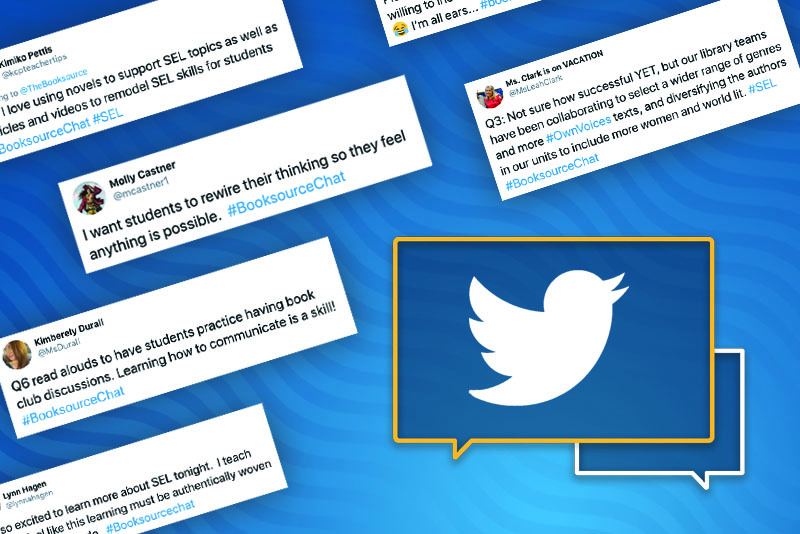
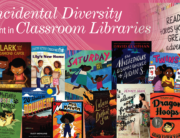
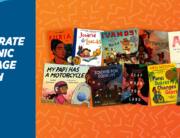
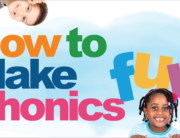
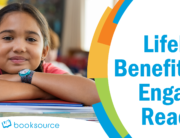
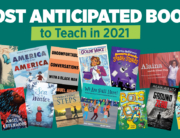
Leave A Comment